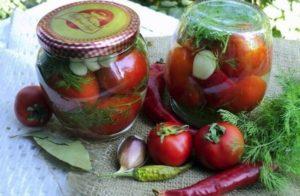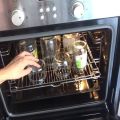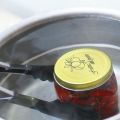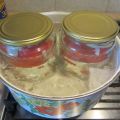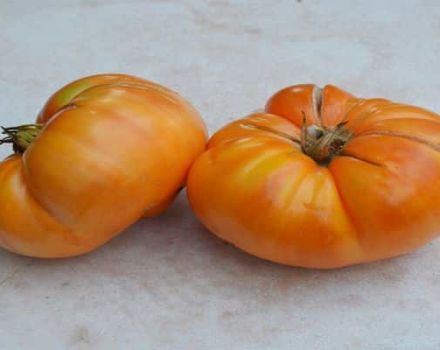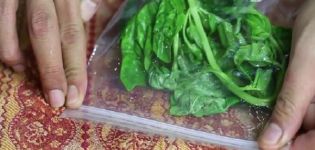The best ways to sterilize tomatoes in jars and the duration of the procedure
For many housewives, sterilization of tomatoes in glass jars is a guarantee of a delicious, satisfying winter period. Summer residents offer ripe tomatoes for canning, which can be sterilized, pasteurized or poured over and over again. So that not a single can "explodes" during the harvesting process and the tomatoes spoil, it is important to observe the canning technique.
Can tomato jars be sterilized?
Sterilizing full cans as well as empty lids is a great way to kill microorganisms that can cause instant product spoilage. Stock up on patience, professional advice, and various spices to taste.
This procedure must be done to eliminate harmful bacteria.
Preparing cans
Sterilization takes place in different ways, but the preparation of containers and contents is always the same.
Before canning, glass containers must be cleaned with a brush, soda solution. The cans are dried in a “grandmother's” way - they are turned upside down on a paper, cloth towel (napkin). When the time comes to fill the containers, it is recommended to re-pour boiling water over them.
Lids for cans are washed with running water with soda and soap. After rinsing, they are placed in a metal dish, filled with hot water and heated for 20 minutes. This measure is taken before canning (maximum 2 hours). You can sterilize the caps:
- in an oven preheated to 120 degrees;
- in boiling water;
- in a small ladle, separate saucepan of boiling water.

Further, the hostesses are taken for the main ingredient of conservation - tomatoes. They are washed in warm water to remove road dirt and dust. At this stage, it is necessary to adhere to the basic rules of sorting, namely to divide the tomatoes by:
- color;
- size;
- degree of maturity.
When sterilizing tomatoes in jars, check again which tomatoes are taken. For blanks, medium and small fruits are chosen, and large ones are best used for filling.
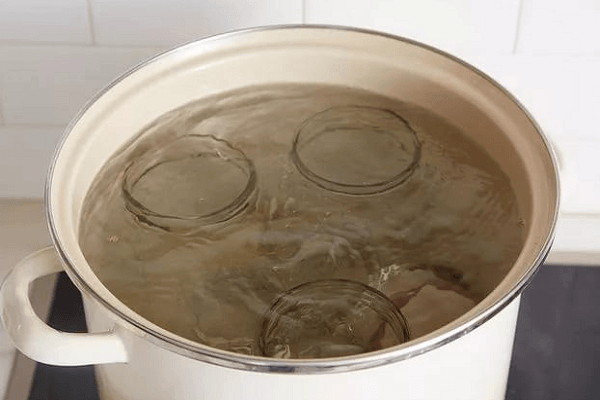
Security measures
Since during sterilization, the hostess deals with boiling water, glass containers, it is worth being careful, observing safety measures. The condition of the products themselves plays an important role.
Canned tomatoes with or without skin. However, before the procedure itself, the fruits are blanched for a couple (about 5 minutes), and later they are cooled. This measure allows in the future to easily peel off the skin and feast on delicious preservation, and also kills all microbes.
In order not to burn yourself when removing cans or lids from boiling water, use:
- kitchen tongs for meat;
- potholder;
- towel with terry.
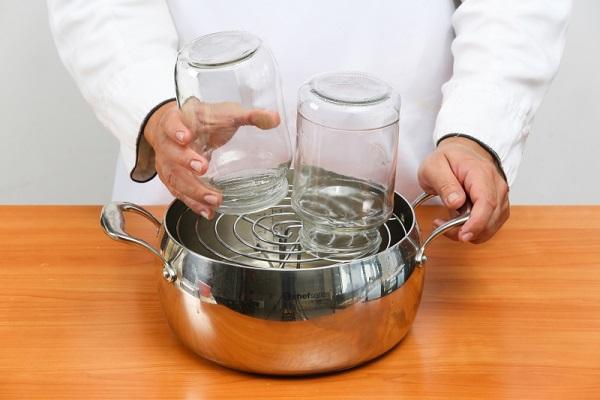
How to properly sterilize cans of tomatoes?
Any glass container, hermetically sealed, is suitable for homework. After sterilization over steam, the tomatoes are carefully placed in a deep container. Then they are sterilized or used by the hot filling method in jars of volume:
- 0.5 l - 10-15 minutes;
- 1 liter - 20-25 minutes;
- 3 liters - 30-35 minutes.
Such measures will allow you to store all preservation at room temperature. This is true if there is no cold cellar in the house. There are several ways to sterilize:
- In a saucepan.
- With steam.
- In a slow cooker.
- In the microwave.
- In the oven.
- Hot filling method.
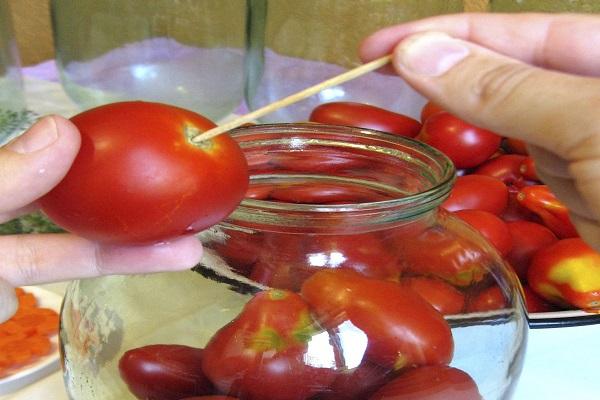
The most popular way to sterilize canned tomatoes is with boiled water. To do this, take a deep saucepan, a vat, and a towel is lowered to their bottom. The can is placed in a filled container, while the water temperature coincides with the temperature of the workpiece. Otherwise, the bank will crack or burst.
The water level should reach the "shoulder" of the jar, covered with a lid (not closed). Next, you need to observe the boiling time, depending on the volume of the container.
After that, the cans are carefully removed and twisted, turned upside down and “covered” in heat until they cool completely.
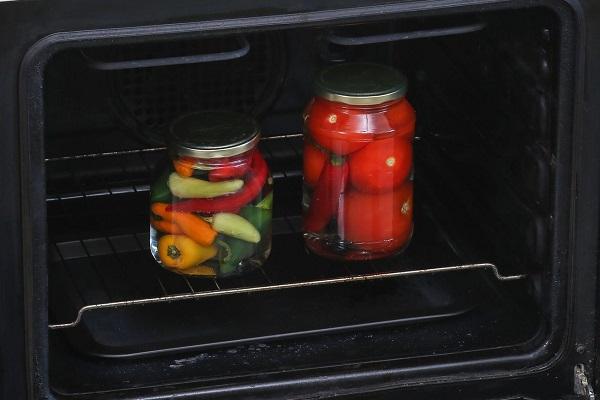
Steam over the pan
Steam cans are sterilized as a traditional way to decontaminate containers prior to preservation. A proven, reliable way to sterilize containers is to use a pot or kettle. You will also need a special cover with several holes.
For such purposes, some housewives resort to using a metal grate from the oven or grill, a sieve, or any other stopper that would hold the jar over boiling water.
Depending on the volume of the glass container, the sterilization time will vary from 5 to 20 minutes. A successful result will be prompted by drops of steam on the walls of the jar at the end of the procedure - the steam should flow down evenly.
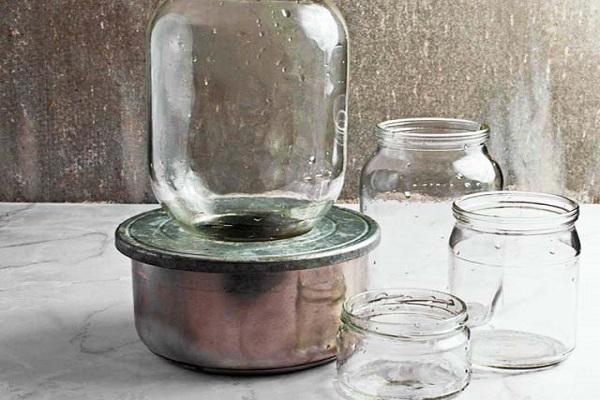
In a saucepan
The most popular way to kill germs and bacteria is to sterilize the cans in a saucepan. There are several important nuances here:
- when laying cans, any clean matter folded in 5-6 layers is placed on the bottom of the pan;
- sometimes a wooden lattice or a metal circle is used;
- during boiling, the pan is closed with a lid;
- water should not be allowed to boil, so it is important to regulate the fire.
The sterilization time for tomatoes in a standard 1 liter jar takes up to 25 minutes.
In addition to kitchen utensils and a stove, you can use a multicooker or microwave. This modern approach has become widespread due to the speed and accuracy of the process:
- In a multicooker, you need to follow the same steps as with a saucepan. In the settings of the device it is necessary to set the “Baking” mode and bring the water to a boil together with the jars of tomatoes placed in the bowl. It is necessary to take out containers with conservation after 10 minutes.
- The microwave sterilization method is the simplest and fastest, because it takes 5 minutes at most. The container with the blanks is placed in the oven with a preset maximum power mode. However, it is impossible to put large 3-liter containers in the microwave.
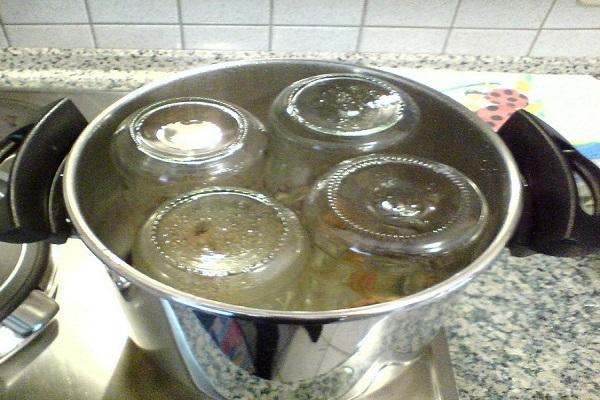
Dry sterilization of tomatoes in a jar can even involve an oven. Harmful bacteria, fungi and other microorganisms are removed by exposure to high temperatures, but without any liquid. The method will consist in the gradual heating of the container, as well as the mandatory steps:
- Pre-cleaning cans and filling them with tomatoes.
- Loose lids on containers.
- Placing jars on a wire rack or baking sheet.
- Heat the oven to a maximum of 120 degrees.
- Warm up glass jars from 10 minutes to half an hour, depending on the volume.
- Remove the "sterilized" preservation from the oven.
In addition to the oven, this method is used on both gas and electric stoves. This method almost does not change the appearance of tomatoes.

How long does it take to sterilize?
Heat treatment of glass containers will protect against the ingress of harmful bacteria and microorganisms. With proper sterilization, blanks for the winter will delight tables with a delicious and healthy snack.
During the procedure, the jars must be placed in a large container, laid on a towel, another matter so that the glass walls do not bump against each other. If a saucepan is chosen for this, make sure that the water in it does not reach the neck by 4-5 cm.
The sterilization time is counted from the beginning of the liquid boiling. The largest cans take up to half an hour, liter cans take about 20 minutes, and the smallest cans take up to 10 minutes.
At the end of the procedure, the tomato cans are rolled up, shaken and allowed to cool in the "upside down" position in any warm dry place.

Half liter
Half-liter containers are considered the most popular when rolling food, vegetables and fruits. Such jars (0.5 l) with tomatoes are sterilized both in the oven and in a saucepan. They are placed in a multicooker, microwave oven.
Tomatoes of any size are placed inside such a container. If the hostess preserves garlic, basil and other products along with tomatoes, they try to select medium-sized fruits. The sterilization time will take no more than 10 minutes.
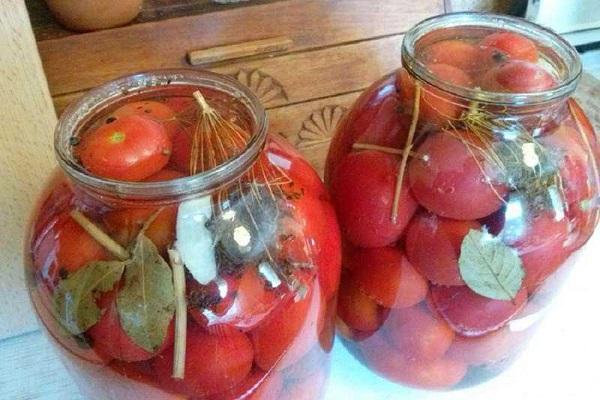
1 liter
In this case, the procedure time is increased to 15-20 minutes: for steam, in the oven or in a saucepan with liquid. They try to choose suitable lids for this or that type of canning:
- a tin cover for a seamer;
- glass with a clip;
- polyethylene for the cold method;
- polyethylene for the hot method.
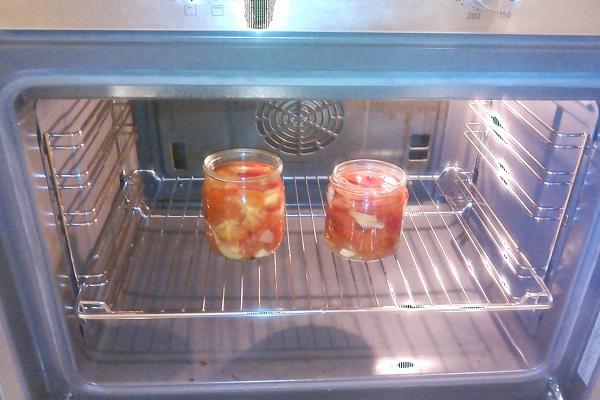
3 liter
The largest jar is not suitable for microwave or multicooker sterilization. The best option is steam treatment of containers. A large bottle can hold a huge amount of tomatoes, so there is a risk of spoiling the "portion".
In addition to traditional cans, you can use bow-lock containers. However, safety precautions must be followed when working with oven or steam. These models have metal inserts in the design (hinged lid, handle), therefore, the tack is prepared in advance.
With proper sterilization of full cans, it will be possible to keep homework safe and sound. Such a measure eliminates all microorganisms that can get into a clean container and cause fermentation. The optimal sterilization option is chosen for the successful canning of the country harvest.
